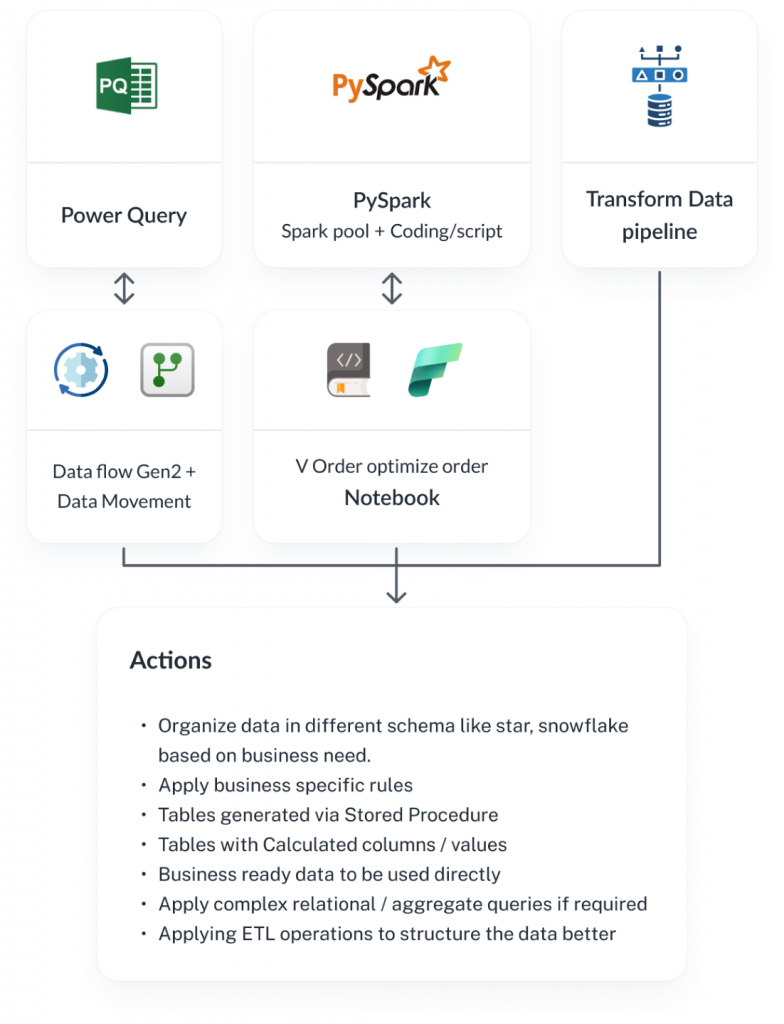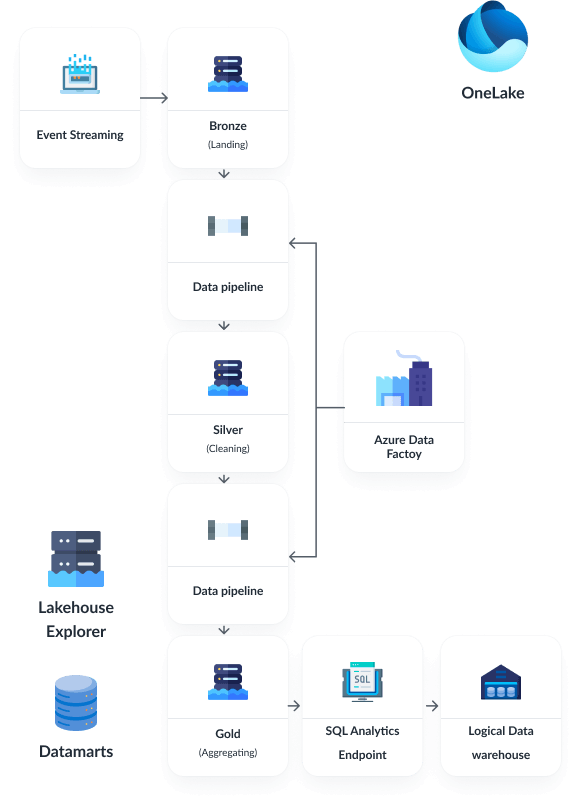- Who We Are
- What We Do
-
-
- Our Services
Industry Expertise
-
Business Functions
Technology
SaaS
-
-
- Insights
- Working at SELISE
- Contact Us
- EN
- DE
en
- EN
- DE

By leveraging Microsoft Fabric’s OneLake, SELISE is effectively mitigating clients’ data management challenges stemming from scattered, duplicate, and redundant data factoring in a significantly large volume of data and diverse data sources. As a result, clients experience gains in operational efficiency, surpassing traditional data warehousing exercises multifold. This article highlights the journey of SELISE in elevating operational excellence in an exemplary post-merger system integration scenario.
When SELISE was addressing the data-oriented challenges faced by a prospective client, Microsoft Fabric emerged as a premier solution comprising high scalability and cost-effectiveness. Robust support for tried and tested data engineering frameworks and AI capabilities stood out from the onset.
This generic case study shows how SELISE has helped large organizations accelerate their IT integration work after acquiring new entities.
Background
Two major airfreight companies merged, creating a conglomerate with significant strategic synergy but also substantial IT challenges. The merger resulted in disorganized, redundant, and duplicate data sources, as the entities used different applications for their operations. This lack of data traceability led to complex reporting, degraded operational performance, declining customer satisfaction due to imprecise data origins, and increased human effort required to sift through data clutter, ultimately impacting revenue negatively.
Challenge
The main challenge in the post-merger phase was to effectively manage and consolidate the data sets mentioned from two distinct entities into a single, coherent, and easily accessible system. The redundancy, conflict, and disorganization in the merged data required a flexible approach to processing, cleaning, and deduplicating. Successfully curating and aggregating this data was essential to establish a unified source of truth, which is crucial for making informed decisions and streamlining operations.
Solution
To address their data integration challenges, SELISE began with a pre-study phase to identify the pain points across various teams within the conglomerate and gain a comprehensive understanding of the data ecosystem’s complexity. This involved analyzing multiple business domains and evaluating specific reporting use cases, with an eye toward incorporating machine learning capabilities into the new data platform. A significant hurdle was performing Source to Target Mapping (STTM) due to the wide variety of applications used for both internal operations and external customer portals. To resolve this, SELISE decided to implement a unified data lake capable of ingesting data from diverse databases, performing multi-level cleaning, and executing relational mapping to create a trackable and consolidated data resource.
SELISE’s strategy unfolded in multiple phases, adopting the widely used Medallion Architecture to tackle the data engineering challenges at hand.


The new conglomerate was able to completely transform the way they managed their data ecosystem. Establishing a sole source of truth improved the company’s analytical capabilities, which specifically accelerated decision-making processes and improved operational efficiency. This data transformation not only directly addressed initial challenges but also gave innovative capabilities to the merged entity. Consequently, these activities positioned the new conglomerate on a path toward sustained business growth.
SELISE is strategically integrating Microsoft Fabric into its operations to stay ahead of emerging market trends and harness the full potential of business data which is the foundation of any AI-powered system. This commitment involves enhancing IoT data integration capabilities and leveraging machine learning to convert vast data sets into actionable business intelligence. By focusing on real-time data analysis, SELISE aims to develop solutions that provide timely insights across various business operations, enhancing decision-making and operational efficiency.
The company, through its Academy, is also dedicated to enriching its training programs in key areas such as Data Engineering and Data Science, ensuring its workforce is well-equipped to handle the demands of modern data solutions. Looking forward, SELISE’s continued partnership with Microsoft Fabric is set to drive digital transformation, positioning the company as a leader in technological innovation and providing substantial value to its clients. This proactive approach ensures that SELISE not only meets but exceeds client expectations in a rapidly evolving technological landscape.

VP of Strategy & Value Proposition
Email: info@selise.ch
Contact Number: +49 89 54196883